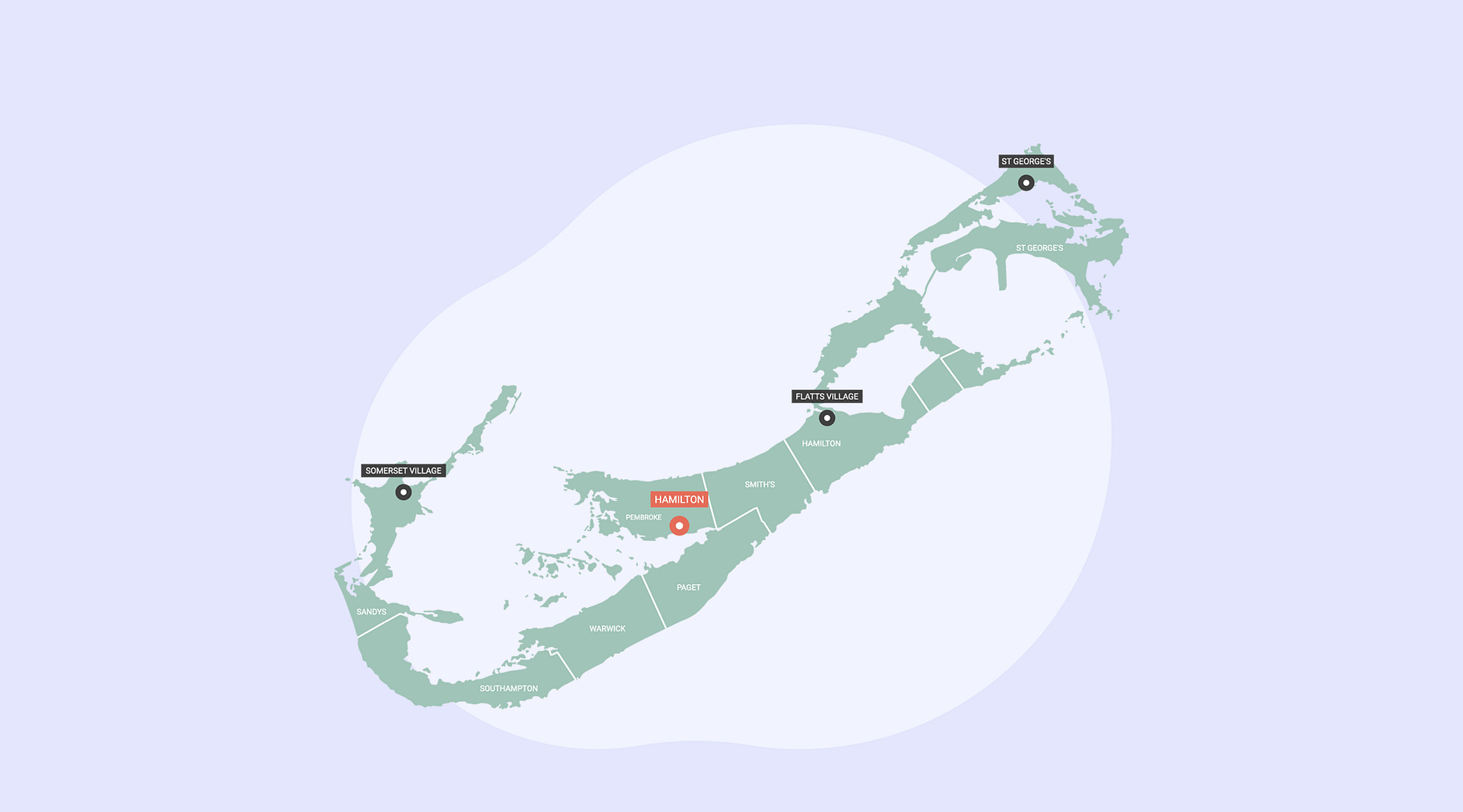
Famous Dive Sites in Bermuda
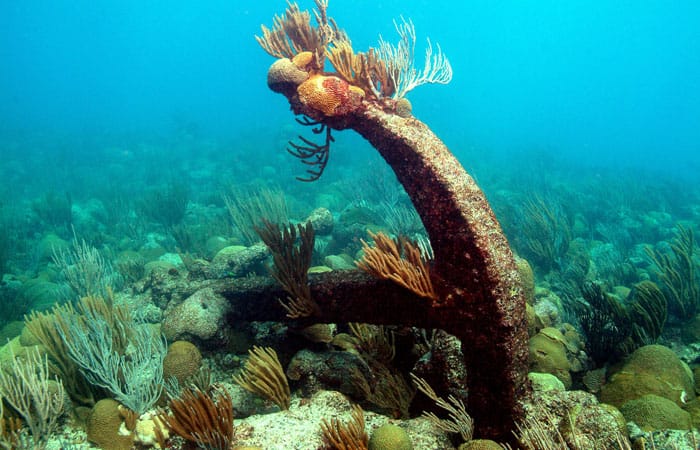
Kate Shipwreck
Built in 1874 the Kate was an iron-hulled English steam freighter she was on route from Galveston, Texas to Le Havre, France with a load of cotton when she struck an unmapped reef 22 miles northwest of Bermuda’s Gibbs Hill Lighthouse. As the ship began taking on water the captain ask for help, and a tug boat towed and grounded her on the south shore to prevent the Kate from sinking. Nearly all of the more than 3,600 bales of cotton cargo were saved, and no lives were lost. Nearly two weeks later, on December 10, a gale broke her up further and pushed the Kate into deeper water.

The Caraquet Shipwreck
The Caraquet was a British mail Iron steamship, approximately 200 feet long, sailing for the Royal Steam Packet Company in London. Built in 1894, she sank on June 25th 1923 in fog on a rough sea after a miscalculation brought the ship to wreck on our northern barrier reef approximately 16 km to the north-west of Fort St. Catherine. The wreckage is spread out over a wide area covering almost 2 acres in 35 to 40 feet of water. The most distinctive portions of the wreckage are her engine, four prominent boilers.

The Cristobal Colon Shipwreck
This 499-foot Spanish luxury liner is the largest known shipwreck in Bermuda. Launched in 1923, this transatlantic luxury liner was the most advanced design of her time. She was wrecked on October 25, 1936, when she wedged herself into a coral reef at a speed of 15 knots. Today, she lies in 30 to 55 feet of water with her wreckage scattered across 100,000 square feet of sea floor. She offers great exploration of her six boilers, steam turbines, propellers, drive shafts, and hundreds of ship parts. The wreck has also become a haven for large groupers and a variety of reef fish.

Mary Celestia Shipwreck
On September 6th, 1864 the Mary Celestia struck a reef just off Bermuda’s South Shore and the Marry Celestia was barely two years old. It operated as a blockade runner for the Confederacy to transport banned goods in and out of Confederate ports while trying to break the Union’s blockade of the South during the Civil War. The wrecks is setting at 55 Feet of water.

The Airplane Wreck
The Airplane wreck was was a heavily-modified Boeing B-50 bomber known as a Hayes KB-501 aerial tanker. Flying from from the Azores to Bermuda on a refueling mission the plane was headed home to England Air Force Base in Alexandria from Bermuda on October 20, 1963. After take off, as the plane was climbing, the left auxiliary jet engine exploded and ignited half of the left wing. The wrecks sits in 25 Feet of water.

Iristo (Aristo) Shipwreck
Built in 1918 in Lorain, Ohio and originally known as the Lake Jessup, the The Iristo was carrying a cargo of 200 barrels of gasoline, a fire engine and a steam roller. In route from Newfoundland to Bermuda in March 1937. Unfamiliar with Bermuda’s reefs, Captain Christian Stephensen seeing the wrecked Cristobal Colon standing out of the water, so he mistakenly believed it was moving through the reefs and gave the order to change course and follow the bigger vessel. In doing so, the vessel hit a submerged reef structure near North Rock. She sits in 50 Feet

King Shipwreck
Built in 1941 in South Carolina, the King was a Navy tug boat built in South Carolina and brought to Bermuda for use as a dive and treasure salvage vessel. Donated in 1984 by the boat’s then owner, Gary Lamb, she became the first boat in Bermuda to be scuttled deliberately for use as a dive site and artificial reef. The wrecks sits in 35 Feet of water.

The Corinthian Shipwreck
Ooriginally built by Shell Oil as an oil tender to service Gulf of Mexico oil rigs, the refitted Niobe Corinthian arrived in Bermuda in 2005 as a floating casino, circumventing Bermuda law by operating 12 miles offshore in international waters. In August 2006, while the ship was in home port, Bermuda police raided it and seized 100 gaming machines. Fire damaged the ship in 2007, and it was again raided by police in 2008. The government eventually took ownership of the derelict ship in 2014. The Wrecks is in 70 Feet of water.

The Forceful Shipreck
The Forceful was purposefully sunk in 2009 as part of the Bermuda Intact Wreck Initiative (BIWI) a few days before tropical storm Bertha hit Bermuda. The Forceful is a fully intact tug boat with length of 75 Feet with a maximum depth of 60 Feet.

Pelinaion Shipwreck
Built in 1907 at Port Glasgow and originally named the Hill Glen, this large cargo steamer with a 50-foot beam changed ownership numerous times before she was purchased by a Greek shipping company and given the name, the Pelinaion, in 1939. The following year, the ship was carrying a cargo of manganese and iron ore from West Africa to Baltimore. Because of World War II, the British had blacked out the lighthouse in a bid to stop the Germans from spying on Bermuda. The captain could not find the island until he ran a ground. She sits in 60feet of water

Xing Da Shipreck
Built in 1902, this Chinese freighter was the target of a U.S. sting operation. The ship left a Chinese port in June 1996 en route to Bermuda with a cargo of more than 80 illegal immigrants hoping to reach the U.S. The Xing Da and her crew were captured in 1997 about 140 miles off Bermuda by the U.S. Coast Guard. The ship was towed to Bermuda and sunk on May 15, 1997 in she is in 104 feet of water.

Rita Zovetta Shipwreck
Built in 1919 by A. Stephen & Sons, Ltd., a Scottish shipyard in Glasgow, this cargo steamer was originally known as the War Gascon and it was outfitted to be a tanker. Two years later, the ship was converted to carry dry cargo and renamed to Rita Zovetta. The Rita Zovetta had a a 52-foot beam and ran aground in heavy seas at the northeast end of Bermuda just off of St. David’s and most of the cargo of manganese ore was offloaded before the ship sank on February 13, 1924. The ship was later heavily salvaged for non-ferrous scrap metals (brass, copper pipes, etc.) several times after World War II. she sits in 65 feet of water.

Taunton Shipreck
Built in 1902 in Copenhagen the steel-hulled cargo steamer named the Taunton, sailed under the Norwegian flag and featured a powerful triple-expansion steam engine. She was carrying a cargo of coal from Norfolk, Virginia to Bermuda when she encountered a misty fog at the entrance to the island’s northern passage the Taunton fell victim to Bermuda’s northern reefs on November 24, 1920, after running aground on the North East Breaker reef. she sits in a depth of 45 feet.

North Carolina Shipwreck
Built in 1876 in Scotland by Macmillan & Son Shipyard, this iron-hulled English barque (a three-masted square rigger), the North Carolina was In route from Baltimore to Liverpool in winter 1879 with a general cargo of cotton, bark and fuel when it became clear that her rudder was damaged. On November 21, the ship took a detour to Bermuda for maintenance. After repairs, the North Carolina left Bermuda on December 30, promptly running aground on a western reef. She sits in 45 feet of water.

Minnie Breslauer Shipreck
Built in 1872, the Minnie Breslauer was a steel-hulled English steam freighter built in Portugal. She left Malaga in early 1873 on her maiden voyage to New York with a cargo of wine, dried fruit, bales of cork and 160-pound lead ingots. Unfamiliar with Bermuda’s reefs, Captain headed towards the shore, but she collided with the submerged South West Breaker reef and ground to a halt. The ship was later pulled off the reef to be towed to make repairs in St. Georges. Unfortunately, the damage was too severe, and she sank anyway before the vessel could reach the port.she sits in 65 feet of water.

The Hermes Shipwreck
Built in 1943 in Pennsylvania, the Hermes was originally used as a U.S. Coast Guard buoy tender until the end of World War II. The steel vessel featured a tall mast forward of the wheelhouse and was fitted with a single cargo boom. After being decommissioned, the ship was turned into a freighter registered in Panama under the name Brava Fogo, which relocated to the Philippines to carry mixed cargo. In 1983, in route from Rhode Island to the Cape Verde Islands, the small freighter experienced engine trouble off the coast of Bermuda and barely reached the Harbour. There was no money available for repairs and the crew hadn’t been paid any wages ship was abandoned and the Bermudan Government took possession of the ship and sold her to the Bermuda Dive Association. she was then scuttled on May 15, 1984 to become an artificial reef. She sits in 80 feet of water.

The Blanche King Shipwreck
The Blanche King sank in December 1920 in route from Norfolk to Bermuda. It was carrying a cargo of coal when the classic American schooner became stranded on the reefs off Bermuda’s southern shoreline. The ship had an iron frame, wooden sides and two decks. She sits in 42 feet of water.

The King George Wreck
The King George or also known as the dredgers was built for the Bermuda government, The King George was built at Glasgow yard, she arrived in Bermuda on 28, June 1911. After arriving in Bermuda the King George started her work of dredging Town Cut in St. George’s. after a new dredger, was ordered 1930 the King George was towed to a position approximately 5 miles inside of North Rock and scuttled. She sits in 70 Feet of water.
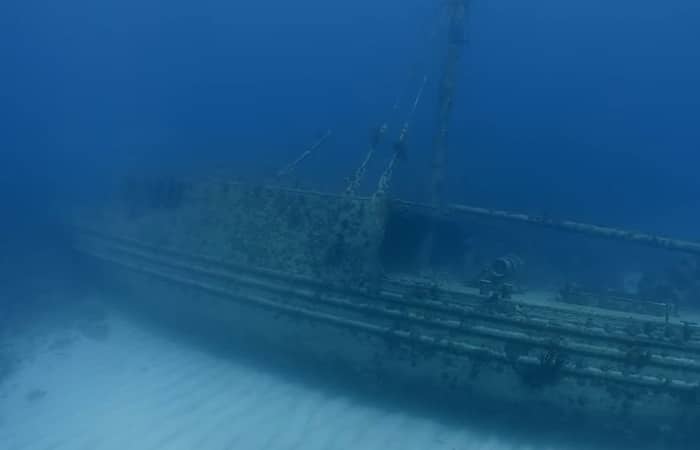
Wychwood Shipwreck
Wychwood was a steamer built in 1950 by a company in Sunderland and had length of just over 300 feet, a beam of 45 feet. On the night of 11 August 1955, she was sailing from Nova Scotia to Trinidad carrying barites to be used in the drilling of oil wells, and sank in 70 feet of water trying to avoid Hurricane Connie.
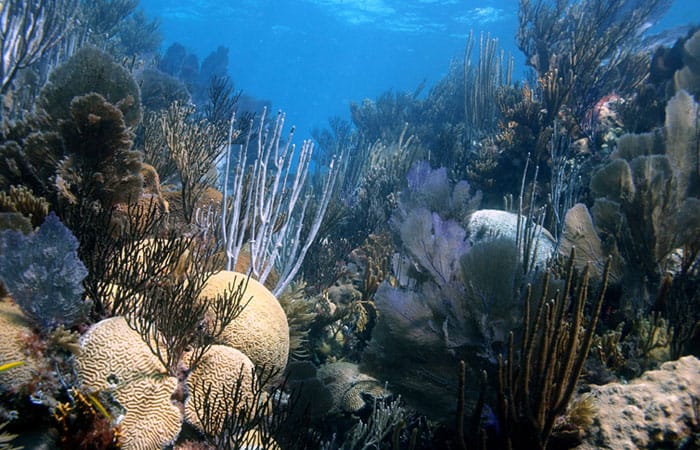
North Rock Reef
North Rock is located approximately seven miles from the east end of Bermuda. It is considered one of the the best reef sites for snorkeling or scuba diving with a depth of 40 feet. The sits has beautiful coral reefs and massive purple sea fans and fish in crystal-clear waters.

Cathedral Reef
The Cathedral is a popular spot for reef diving. Cathedral is a huge underwater dome with light penetrate into the site. With feeling of being inside a vast subterranean cathedral. This is a very popular dive with a lot marine life, including schools of ocean tarpon and snappers. The depth is 40 feet.
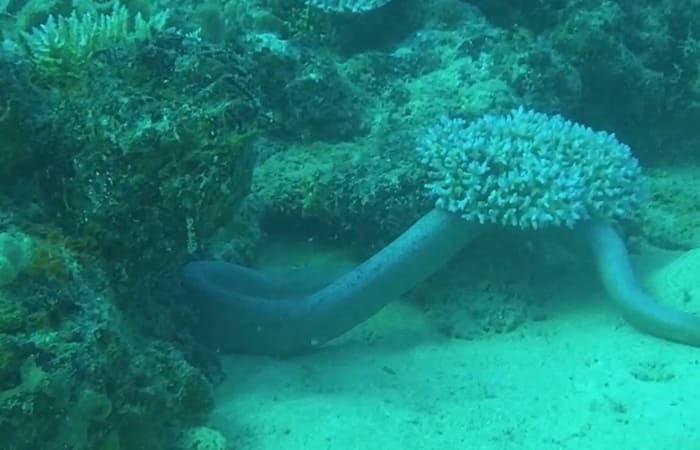
Snake Pit Reef
This site is known for a large bowl of pure white sand surrounded by healthy coral patch reef. the dive site got its name from the small habitat of grass eels that can sometimes be seen in one edge of the sand most of the time a collection of small eels that will come out from the sand which looks like a bed of fine sea grass. The depth is 40 feet.
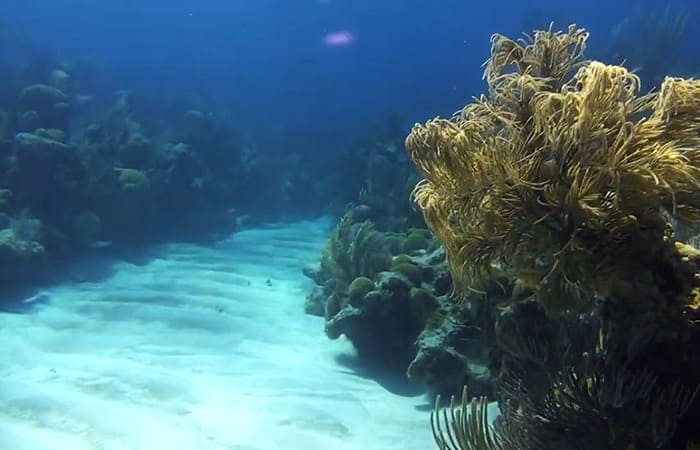
South West Breaker Reef
South West Breaker reef is located to the south of Bermuda. The breaker is made up a reef system that is called the breakers because they break the surface of the ocean, where the water bubbles and boils, but also because they break up any ships that have been unlucky enough to encounter them. Also there is a lot of swim throughs and small caves with a depth of 35 feet.

Hangover Hole Reef
Like the Gleana wreck nearby, Hangover Hole features exceptional canyons, swim-throughs arches, and cave. Great coral formation, fish and Marine life. The reef is located on the south side of the island and the depth is 40 feet.
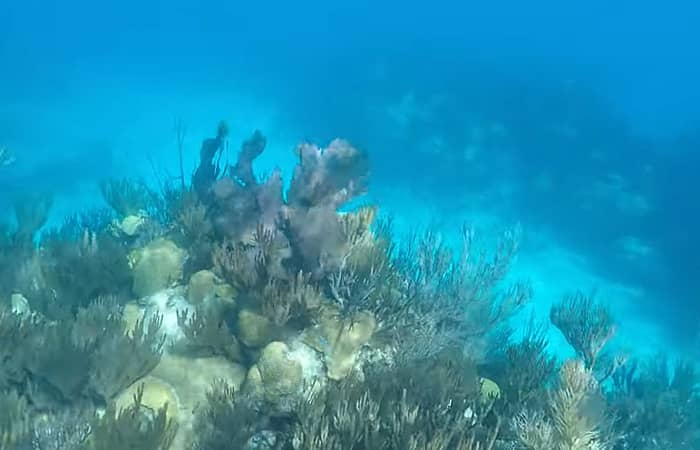
Eastern Blue Cut Reef
The Eastern Blue Cut is one of the largest breaks around Bermudas reef. The flow of nutrients through this area makes it one of the best sits for snorkelling or scuba diving. and there is a lot of fish and coral to see. The depth is 50 feet.

Watch Hill Park Reef
Watch Hill Park have a lot to offer divers there is a lot of coral. And the coral is in good condition because not may dive shops go there. There good marine life and there is also a surprise on the type of marine life you will see on the dive because the marine life changes very often. The depth is 50 feet.



